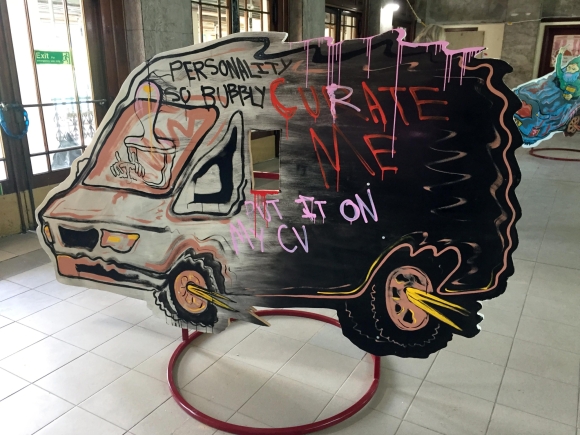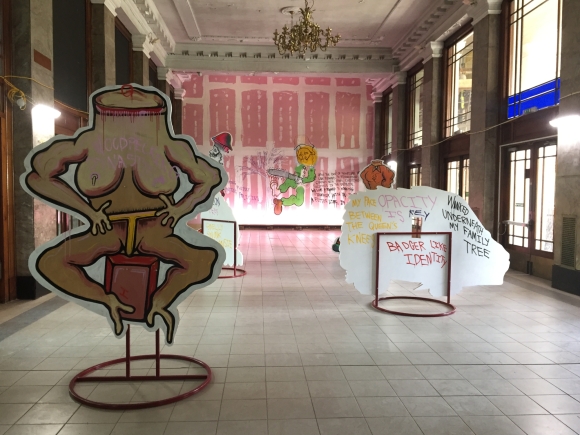Following the latest Arts Council Collection Curators’ Day at this year’s Glasgow International, Amy Tobin, Curator at Kettle’s Yard and Lecturer in History of Art, University of Cambridge, reports from Scotland’s largest festival for contemporary art.
The Director’s Programme for Glasgow International 2018, this year put together by Richard Parry, presented visions of diverse futuristic worlds both utopian and dystopian. In the group show ‘Cellular World: Cyborg-Human-Avatar-Horror’ these visions were clustered together cheek-by-jowl, presenting, in tableaux form, technological futures (Lynn Hershman Leeson) and technological ruins (Sam Keogh); Wittigian guerrilla warriors (Mai Thu Perret) and a combination of barbed wire and baby grows (Jesse Darling); digital avatars (E. Jane) and imagined master architects (Cécile B. Evans). The exhibition’s titular list speaks of recent reinvestments in Donna Haraway’s ‘Cyborg Manifesto’ (1993). The hyphens connect the disparate terms in chain, and perhaps this also provides a model for connecting the works grouped together in the exhibition; each offering a portal into a technological and multi-textured world.
Beyond GoMA, the Director’s Programme spread through different venues in the city, and this distance allowed some chain links to contort and break. Given space works by Tai Shani, Mark Leckey and Hardeep Pandhal temporarily created alternate worlds, while others like Lubania Himid’s The Wagon at Kelvingrove Art Gallery intervened in the space of the popular museum. The spectre of Tai Shani’s performance SEMIRAMIS, which was performed over the first four days of Glasgow International (GI), hung heavy over our group of latecomers, but there was still much to wonder at in the remaining installation-cum-stage set at Tramway. In this form the work comprises a number of sculptural objects arranged on a stepped stage, or hanging above it ready to be activated, or not by performers. Late visitors had an audio recording of the performances as a supplement, but Shani’s landscape of disembodied hands, floating columns, twisted pink tubes and panels of syrupy colour was enough to take in, expanded as it was from the sculptural forms made for her collaborative exhibition with Florence Peake at Wysing in Autumn 2017.

